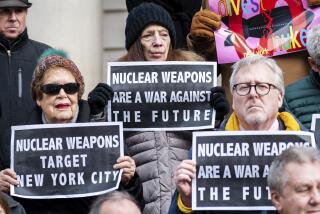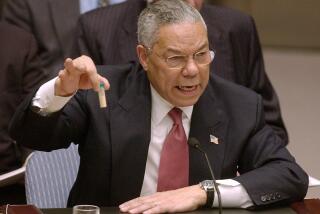Killing Hidden Monsters
- Share via
One of the major and horrifying discoveries of the 1991 Persian Gulf War was how much progress Iraq had made in covertly producing weapons of mass destruction. That Saddam Hussein had an arsenal of toxic agents was long known. But only when international inspectors were able to examine Iraqi records and research and production facilities after the war did the full and frightening scope of Baghdad’s nuclear weapons intentions become clear.
Military planners have an abiding fear of surprises; they can kill too many people and change the outcome of battles. That’s why, after evaluating its experience with Iraq and spurred on by a directive from President Clinton, the Pentagon is now preparing a major effort to upgrade U.S. abilities to detect and deal with unconventional weapons threats in hostile Third World countries.
Formally called, in typically clunky Pentagonese, the Defense Counterproliferation Initiative, the new approach is an expansion and improvement of several earlier but lower-priority programs. Defense Secretary Les Aspin notes that it no longer is enough to try to control the spread of unconventional weapons. More than 20 countries now have or are believed to be developing weapons of mass destruction--nuclear, chemical and biological--and more than a dozen have operational ballistic missiles capable of delivering such weapons to targets hundreds or even thousand of miles away. What’s needed, says Aspin, are new military capabilities to counter the threats that diplomacy has been unable to deal with.
The focus of the initiative will be on detecting where weapons of mass destruction are being developed and stored, and on devising ways to destroy them if that need arises. Special emphasis will be put on “improved non-nuclear penetrating munitions to deal with underground installations,” meaning missiles that burrow to their targets. Also high on the priority list is technology to locate mobile missile launchers, like Iraq’s Scuds, few of which were found in the course of the war.
The importance of the new initiative is self-evident. What’s needed for it to succeed is adequate funding and executive oversight to make sure that it doesn’t become lost in the bureaucracy. Aspin is right: “The threat is upon us today, not in the future.” Finding ways to respond to that threat is deservedly a matter of high urgency.
More to Read
Sign up for Essential California
The most important California stories and recommendations in your inbox every morning.
You may occasionally receive promotional content from the Los Angeles Times.










